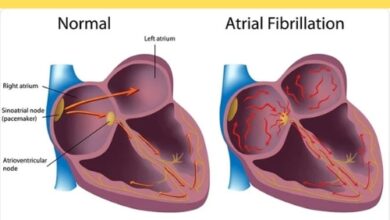New and natural cure for male baldness is highly effective

Have you ever wondered if a sugar cube could hold the key to stopping hair loss? You might not be too far off, after all.
A particular sugar molecule called 2-deoxy-D-ribose (2dDR), as it is formally called, may be the key to treating male pattern baldness, or androgenic alopecia. This discovery was made in a recent study.
For the millions of men suffering by this widespread illness worldwide, that is wonderful news.
2dDR sugar vs. male baldness
Professor Sheila MacNeil, Emeritus Professor of Tissue Engineering at the University of Sheffield, and her group of international scientists from COMSATS University in Pakistan deserve great credit for their hard work in making this unexpected finding.
Because of their collaborative research, this naturally occurring sugar has gained attention due to its capacity to stimulate angiogenesis, or the formation of new blood vessels.
How the 2dDR sugar works
Not your typical table sugar, 2dDR is a molecule that plays a significant part in many biological processes in both humans and animals.
The researchers saw a significant amount of hair growth when they applied it to the skin of bald mice. Remarkably, this was similar to the results of minoxidil, one of the two medications for baldness that have received FDA approval.
According to Professor MacNeil, “male pattern baldness is such a common condition, affecting men all over the world.”
According to our research, increasing the blood flow to the hair follicles through the use of a naturally occurring deoxy ribose sugar may be the easiest way to treat hair loss and promote hair growth.
Sweet side of science
We are all aware of how important hair follicles are to the process of hair production. For these microscopic skin organs to operate properly, they need a strong blood supply.
The sugar component in alopecia prolongs the active growth phase of the hair cycle by promoting the development of new blood vessels around these follicles, so creating an environment that is favorable to hair growth.
This approach stands in stark contrast to current therapies such as finasteride and minoxidil, which function by obstructing hormones linked to hair loss or by dilating blood vessels.
While researching how the sugar could promote wound healing by encouraging the growth of new blood vessels, the researchers discovered the potential of 2dDR.
When compared to untreated areas, they noticed faster hair growth surrounding the healed wounds. Their exploration of 2dDR’s potential as a therapy for hair loss was prompted by this conclusion.
2dDR sugar compound for baldness
Even if the results are encouraging, it’s important to keep in mind that mice were used in this study. To determine the efficacy and safety of 2dDR for human hair regeneration, human trials are still required.
However, the possibility that this sugar molecule can provide a novel treatment for hair loss gives the researchers hope.
According to Muhammad Yar, an associate professor at COMSATS University Pakistan, “this pro-angiogenic deoxy ribose sugar is naturally occurring, inexpensive, and stable.” “This makes it a compelling candidate to investigate further for the treatment of male baldness.”
Should these findings hold up to more testing, 2dDR might provide suffering men all over the world a special choice that might not have any of the negative consequences of existing treatments.
“Although our research is still in its early stages, the results are encouraging and call for additional study,” says MacNeil. “This may provide an alternative method of treating this illness, which has an impact on men’s confidence and self-image.”
New chapter in baldness treatment
In fact, this study provides new therapy options for hair loss. If two-fold drug delivery can be shown in humans, there are numerous benefits. It might have fewer adverse effects than minoxidil while still being just as effective.
It may be advantageous for people who don’t respond to current treatments because of its unique technique of promoting blood vessel formation.
Given that it occurs naturally, it might be more bearable and safer. Furthermore, compared to existing baldness treatments, the sugar molecule may be more accessible due to its stability and affordability.
Nonetheless, much more investigation is required to completely grasp the potential of 2dDR as a treatment for hair loss. Human trials are the next important step in determining its safety and efficacy.




